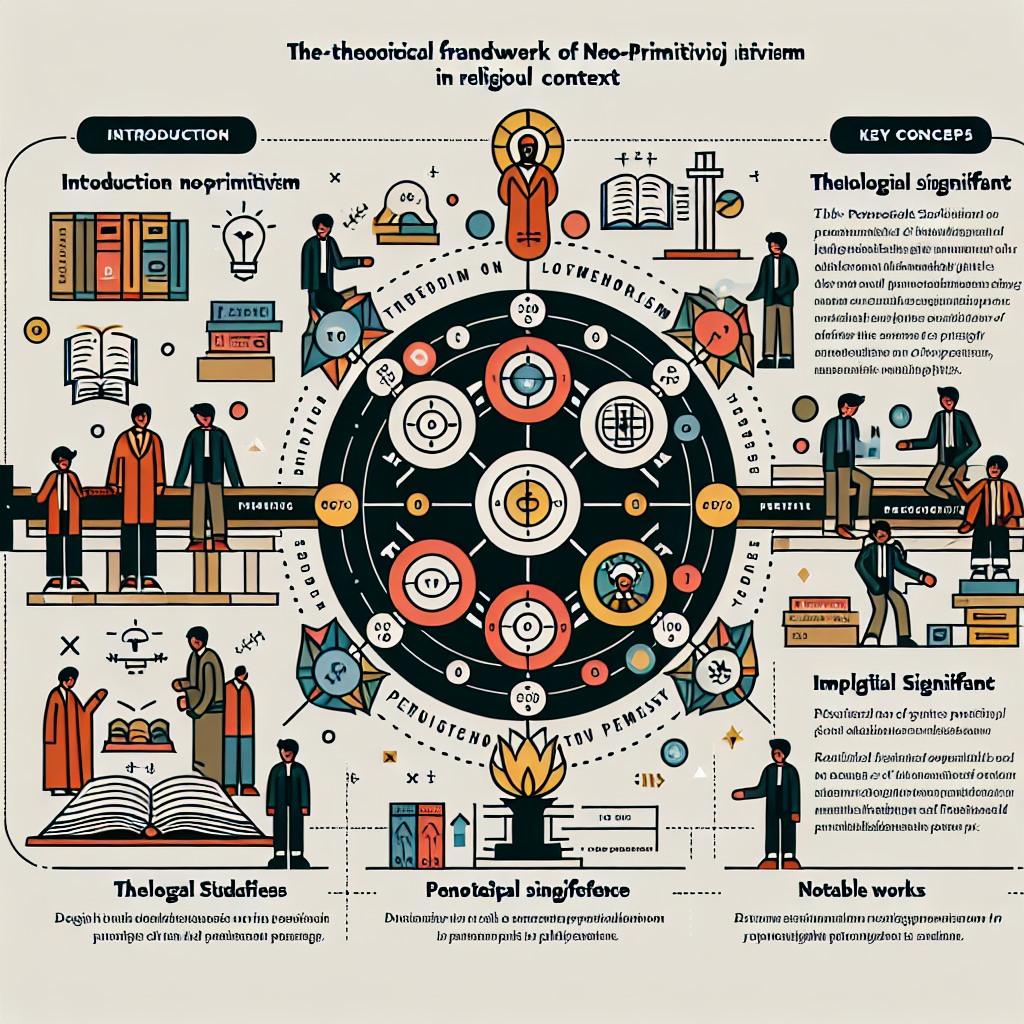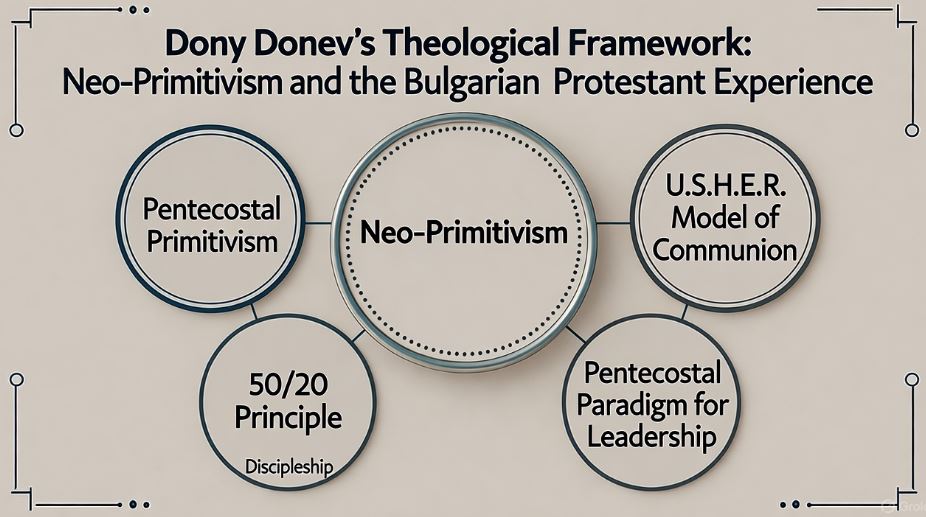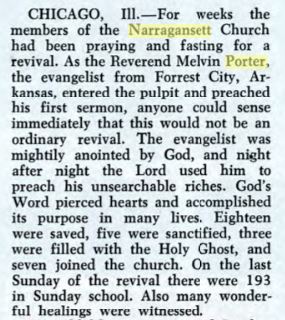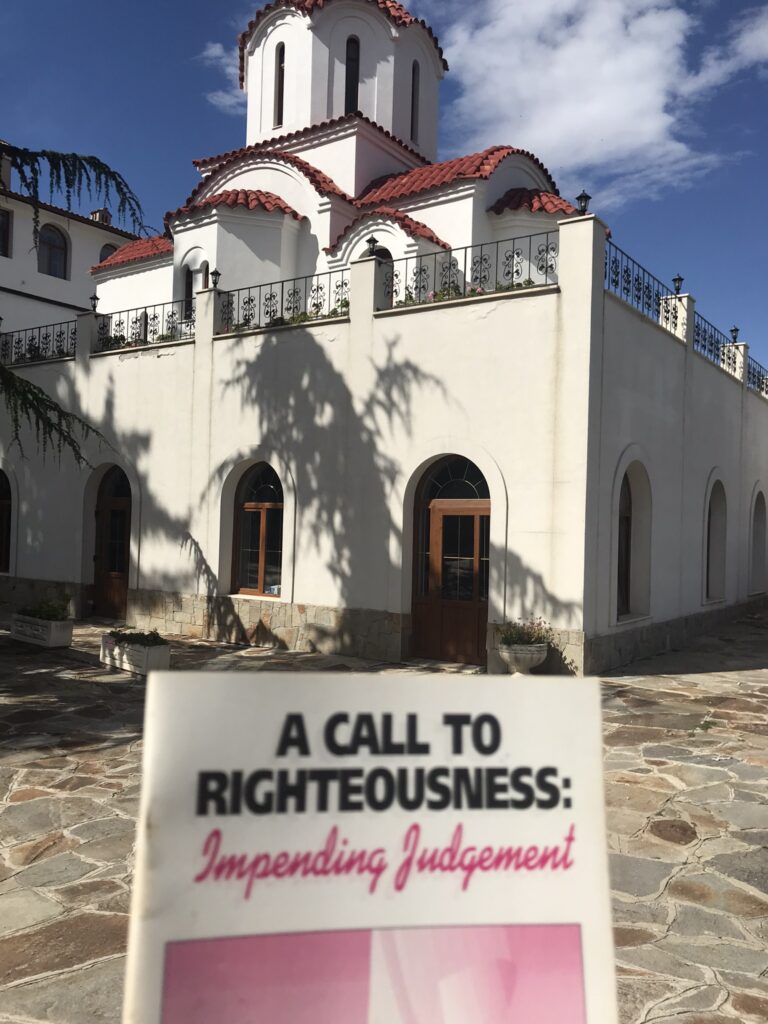Dr. Dony K. Donev: Introduction to John 5
-
Focus on a small part of Chapter 5; full chapter will be addressed in another talk.
-
Expository Bible study principle: do not omit what the author intends; understand the context.
-
John’s Gospel narrative in brief:
-
Chapter 1 – Creation and beginning.
-
Chapter 2 – Christ’s first miracle (water to wine).
-
Chapter 3 – Nicodemus and questions of faith.
-
Chapter 4 – Woman at the well.
-
Chapter 5 – Paralytic man (focus of this study).
-
Application: We see ourselves in these stories:
- At the well with the woman.
- With the paralytic, facing sickness or oppression.
- In creation, asking questions about beginnings.
- John’s Gospel speaks to our lives and experiences.
Verse 1: Context & Significance
-
“The Feast of the Jews” = Passover (second recorded Passover Jesus attended).
-
Chronology: Jesus ministered ~3–3.5 years, not four.
-
Johannian phrase: “After these things…” (Greek: meta tauta). Contextually links back to previous events (Samaritan woman, previous miracles).
Verse 2: Present Continuous Action
-
“Now was” vs. “there was” → emphasizes ongoing reality.
-
Location: Sheep Gate, Pool of Bethesda (“House of Mercy”), five porches.
-
Historical significance: gate restored by Nehemiah; miracles happen through preparation and prior work.
-
Water symbolism: continuous in John’s Gospel.
Verse 3: The Multitude at Bethesda
-
People lying on porches: sick, blind, lame, paralyzed, waiting for the stirring of the water.
-
Place functioned like a hospital or hospice, offering mercy but not healing.
-
Importance: highlights the need for action, faith, and not just passive waiting.
Verse 4: Angel’s Stirring of Water
-
Angel stirred water; first to enter after stirring was healed.
-
Greek: “troubling” of water → divine or angelic activity.
-
Step of faith required to enter: miracle is available, but effort is needed.
Verse 5–7: The Paralytic Man
-
Man had been ill for 38 years.
-
His theology: “A man have I none…” → depended on others, not God directly.
-
Lesson: don’t wait on another; God can act directly.
-
Human tendency: self-pity, victim mentality.
-
Jesus asks: “Do you want to be well?” – Highlights awareness, desire for change, and personal responsibility.
Verse 8: Jesus Commands Healing
-
“Rise, take up thy bed and walk.”
-
Immediate healing, resurrection-like command (Greek: anistemi).
-
Significance: ignores self-pity, performs the miracle directly.
-
Steps in healing: man immediately rises, strength restored, carries his bed/stretcher.
-
Application: miracles require obedience and action; prior failures don’t prevent success.
Verse 10–12: Testing by Religious Leaders
-
Sabbath controversy: “It is not lawful to carry thy bed.”
-
Misplaced focus: rules over divine action.
-
Observation: miracle transcends human rules; legalistic thinking may blind people to God’s power.
-
The healed man didn’t initially know who Jesus was → possible to receive miracle without knowing fully, but sustaining it requires knowing God.
Verse 14: Warning Against Sin
-
Jesus instructs: “Sin no more, lest a worse thing come unto thee.”
-
Connection: healing is not just physical but spiritual; continued obedience sustains the miracle.
Key Observations & Theological Lessons
-
The man who had no human helper was found by the Son of Man who created all men.
-
Healing is a believer’s right; Jesus administers it within the covenant of creation, restoring balance to the universe.
-
Miracles point to Christ as the central figure (water symbolism, “man of the hour”).
-
Faith, obedience, and direct encounter with God are crucial.
Practical Applications
-
Everyone can receive a miracle.
-
God makes healing and restoration possible.
-
Personal faith and obedience maintain the miracle in daily life.
-
Step of faith is often required; God provides directly.
365 Daily Thought Stirring Stories from the Field
In 1999, Dony and Kathryn established Cup & Cross Ministries International with a vision for restoration of New Testament theology and praxis. Today they have over 50 years of combined commitment to Kingdom work. This book invites you to spend a few moments each day on the field sharing their experiences of serving as pastors, evangelists, chaplains, consultants, church trainers, researchers, missionaries and educators of His Harvest around the globe.


Dr. Dony K. Donev: Eschatology in the Gospel of John
Eschatology in the Gospel of John (2024 EPIC REVIVAL)
There is no synoptic agreement regarding eschatology in the Gospel of John. Unlike Matthew, Mark, and Luke, there is no single chapter in John that deals exclusively with the end times. Yet, eschatology is present in every chapter of John’s Gospel.
John, in contrast to the synoptic writers, sets forth a realized eschatology, where Jesus’ message proclaims the eternal breaking into the temporal world.
The Nature of Johannine Eschatology
In the Fourth Gospel, Jesus uses apocalyptic language to describe the transcendental nature of the Kingdom of God. John presents the Early Church with a dual futuristic reality:
-
To be saved with God toward eternal life in this lifetime, and
-
Then to enter eternal life in eternity itself.
These are not the same, according to John’s Epistles, where the apostle uses the present continuous tense to indicate that salvation must persist through life into eternity.
Thus, the terminology of the Fourth Gospel projects both the present and the future within Jesus Christ.
The Names of Jesus in the Fourth Gospel
The Gospel of John names Jesus in ways that reveal His eschatological role:
-
“Savior of the world” – offering salvation through His sacrifice.
-
“Son of Man” – pointing to His earthly ministry leading to the Cross.
-
“Son of God” – revealing His eternal existence and post-resurrection glorification.
-
“Messiah” – pointing to His future coming Kingdom.
These titles demonstrate existentialization in Johannine eschatology, where the resurrection, parousia, and the coming of the Holy Spirit are not separate events but one unified promise.
The “Already” and “Not Yet” of Eternal Life
In John 5:28–29, we encounter an example of primitive Christian eschatology. John presents both a “not yet” (future) and an “already” (present) dimension of eternal life. This creates a tension between the already fulfilled and the not yet completed.
In John 6:40, 53–54, Jesus links eternal life (spiritual) with resurrection life (physical).
The Six Eschatological Themes in John
Eschatological themes in John are not concentrated in one section, but spread throughout the Gospel. The six major areas are:
-
Death
-
Heaven
-
Judgment
-
Resurrection
-
Eternal Life
-
Christ’s Return
These themes appear in 16 of the 21 chapters, especially in chapters 3, 5, 6, 8, 11, and 12.
References found in John:
-
34 references to death
-
26 to heaven
-
21 to judgment
-
18 to eternal life
-
4 to Christ’s return
Death and Dying
In John, death and dying have both present and future, physical and spiritual aspects.
Spiritual death is the present condition of those who reject the word of the Son.
Physical and spiritual death must not be confused, just as physical and spiritual (eternal) life must remain distinct.
In John 6:58, eating the bread from heaven—that is, receiving Jesus Christ—keeps one from spiritual death and provides eternal life.
Eternal Life
The one who receives eternal life is delivered from judgment (3:17–19; 5:24).
Jesus assures that such a person will never perish, and that no one can remove them from His care (10:28).
In John 5:24, Jesus connects eternal life to hearing His word. The Greek term akouō means not merely to hear, but to hear and to do His word.
Jesus explains that the Father “has life in Himself” (5:26), being uncaused and independent. Since the Son shares the same divine essence, He partakes in this same eternal quality.
Again, John’s eschatology holds both a present and future dimension of eternal life—the “already” and the “not yet.”
Resurrection
In John 5:19–29, we find three of Jesus’ “truly, truly” (Amen, Amen) statements. In verses 19–23 and 25–29, resurrection truths are revealed.
Jesus claims power and authority over resurrection and life, equal to that of the Father (5:21).
The Son of Man is directly associated with resurrection in verses 28–29.
During His earthly ministry, only some of the dead heard His voice (such as Lazarus and Jairus’ daughter). But in the eschaton, “all” the dead will hear His voice and rise from the tombs.
Thus, the God who calls forth resurrection becomes our eschatological hope for the future.
Heaven
In John’s Gospel, “heaven” is referenced both directly and through terms like “above,” “my Father’s house,” or “a place for you.”
These passages affirm that heaven is a real place with definite location and purpose, providing future hope for believers.
Jesus teaches that the realities of heaven stand in contrast to those of earth (3:12).
All genuine blessings come from heaven—that is, from God (3:27).
The bread from heaven (6:31–33) provides eternal life and is equated with Jesus Himself (6:38).
In chapters 14 and 16, Jesus describes heaven as going to the Father, and calls it “my Father’s house” and “a place for you” (14:2–3).
The only other use of “my Father’s house” (2:16) refers to the temple, linking earthly worship to heavenly fulfillment—just as Revelation describes heaven without a temple, for the Lamb is its temple.
Judgment
John’s Gospel presents judgment as both present and future.
Those already judged by God now will also face judgment in eternity—unless they are born again.
Jesus uses two key terms for judgment:
-
krinō – to judge, separate, or condemn.
-
apollymi – to perish, the opposite of being saved.
John’s presentation of judgment falls into three categories:
-
The Judge – Christ Himself.
-
The Judged – humanity.
-
The Standard of Judgment – God’s truth and word.
Christ’s Return
The Gospel references Jesus’ coming in several senses.
John 14:2–3 and 21:22–23 refer to the Parousia, His second coming.
John 14:28 and 16:16–22 may refer to His return to the disciples through His resurrection.
Revelation later expands this concept, depicting Christ returning with His saints.
Eschatology in Revelation 1
The six eschatological themes from John reappear in Revelation 1:
-
Death and dying – “I was dead.”
-
Eternal life – “I am Alpha and Omega, the first and the last.”
-
Judgment – “Every eye shall see Him, and they also which pierced Him.”
-
Resurrection – “I was dead but live forevermore.”
-
Return – “Behold, He cometh with clouds; and every eye shall see Him.”
Revelation reveals the invisible God made visible—the God of Light who created light so that He might be seen by all in the last day.
We see the Light in John, and the Light glorified in Revelation.
The rejected God of John now returns victorious in Revelation.
The Speaking God
Beside the Light, we have the Word spoken by the Voice:
“Then I turned to see the voice that spoke with me” (Revelation 1:12).
The God who spoke in Genesis still speaks today.
You are not alone, nor without direction—turn from your understanding to the Voice who speaks through the ages.
The Call to Respond
God was moving in a new way in Revelation, and John wanted to be part of it.
He was told that revelation would unfold in three stages:
-
The things that you hear
-
The things that you see
-
The things that you experience
Reflect personally:
-
What do you hear in your life—just the noise of the world?
-
What do you see—failure, depression, or God?
-
What do you experience—an empty church or the living Christ?
Turning to See the Voice
John said, “I turned to see the voice” (Rev. 1:12).
It is time to move beyond merely hearing His voice and begin to see Him face to face.
When God speaks, three things happen:
-
He has a plan.
-
He has the power to do it.
-
No one can stop Him.
Seeing the Voice of God
How can we see the voice of God?
Just as creation saw it when He said, “Let there be light.”
But today, we have become too dignified, too busy, too proud to follow His way.
We must turn from our own ways to see Jesus:
a. Turn from your way to see The Way.
b. Turn from your truth to see The Truth.
c. Turn from your life to see The Life.
In the Hand of God
How do we turn? By trusting the hand of God.
“He laid His right hand upon me” (Rev. 1:17).
In verse 16, Jesus holds seven stars, representing the angels of the seven churches—not only the good churches, but all seven.
The seven stars remind us that God has not left us; we are still in His hand.
It is the same hand that was nailed on Calvary,
the same hand that created the world,
and the same hand that holds the future of all creation.
Are you in the hand of God today?
Does your family need that touch?
The Ultimate Question
All these studies mean nothing if we do not make it to heaven.
If we do not meet again in this life,
may we meet in heaven.
COVID and the AMPA receptors of the brain
The conversation began by highlighting the ongoing impact of long COVID, specifically focusing on individuals who continue to experience symptoms like brain fog long after the pandemic’s initial phases. A recent study published in Brain Communications provided the first biological evidence explaining this phenomenon. Researchers discovered changes in AMPA receptors of the brain, which are crucial for memory and learning, potentially linking these changes to cognitive impairments commonly associated with long COVID. Utilizing cutting-edge PET imaging, the study compared brain scans of those with long COVID to those without, revealing increased AMPA receptor densities in affected individuals.
Dr. Deepak Nair pointed out that the study’s findings were intriguing, noting that those with brain fog showed an upregulation of AMPA receptors, linking this to possible cognitive function decline. However, the findings suggest that increased AMPA activity is only part of the picture; an overactive immune response in the brain, potentially triggered by COVID infections, might also contribute. Researchers identified inflammatory markers that coincided with increased AMPA receptor levels, indicating that these immune responses might underlie the receptor changes and associated cognitive issues.
Despite these promising insights, the study remains in its early stages. Dr. Nair highlighted the need for additional context, such as the COVID status of the control group, to further validate the results. While the study did not propose a specific treatment, it offers a direction for scientists to explore, such as developing medications targeting AMPA receptor activity to help alleviate brain fog symptoms. According to Dr. Takuya Takahashi, recognizing brain fog as a legitimate condition could inspire the healthcare industry to develop better diagnostic tools and treatments, offering hope to those still battling the long-term effects of COVID-19.
Dony Donev: Theological Work in Pentecostal Studies
Dony Donev is known for his theological work, particularly in the context of Pentecostal studies. While he may not have a widely recognized catalog of specific terms or frameworks that have achieved broad usage, he has contributed significantly to the academic field through his research and writings.
Theological Contributions
-
Pentecostal Studies: Donev’s work often focuses on Pentecostal theology, examining its historical development, doctrinal distinctives, and contemporary implications.
-
Contextual Theology: He explores how Pentecostal theology interacts with cultural and societal contexts, particularly in Eastern Europe.
-
Pentecostal Hermeneutics: Donev might have contributed to discussions about how Pentecostals interpret the Bible, emphasizing a Spirit-led reading of the Scriptures.
Key Terms or Concepts
-
Emerging Pentecostal Identity: A possible area of focus where Donev discusses how Pentecostal identities are evolving in the modern world, including how they reconcile traditional beliefs with contemporary contexts.
-
Cultural Engagement: A term that may be used to describe his analysis of Pentecostalism’s role in engaging with and transforming culture.
For more specific terms or frameworks coined by Dony Donev, it would be beneficial to consult his published works or academic papers.

Pentecostal primitivism is a concept within Pentecostal theology emphasizing a return to the faith and practices of the early Christian church. Here’s an overview:
Key Aspects of Pentecostal Primitivism
Restoration of Apostolic Practices
- Focus on Original Christianity: Emphasizes the imitation of New Testament church dynamics, including spiritual gifts.
- Spirit-Led Worship: Encourages direct experiences with the Holy Spirit, akin to early church practices.
Doctrinal Simplicity
Primary Framework: The USHER Model of Communion

The U.S.H.E.R. Model of Communion (or USHER Model)
-
Creator: Dony K. Donev, D.Min.
-
Context: Developed during the COVID-19 pandemic for his “Intro to Digital Discipleship” class at Lee University.
-
Core Purpose: To answer the question “What follows communion?” in Christian practice and catechism. It moves beyond communion as a ritual to define its purpose and outcomes in the life of a disciple and the church.
-
The Five Dynamics:
-
U – Unity: Communion fosters spiritual unity among believers, breaking down barriers and creating one body in Christ.
-
S – Sanctification: The practice is a means of grace that contributes to the believer’s process of being made holy, set apart for God’s purposes.
-
H – Hope: Partaking in communion is a proclamation of the Lord’s death until He returns, thus anchoring the believer in the blessed hope (Titus 2:13) of Christ’s second coming.
-
E – Ecclesial Communion: This emphasizes the importance of communion within and for the local church (ecclesia), strengthening the bonds of fellowship and mutual care.
-
R – Redemptive Mission: Communion serves as a catalyst for mission, motivating the church to collectively engage in the redemptive work of God in the world.
-
Other Associated Frameworks and Concepts
Dr. Donev’s work, particularly through the Center for Revival Studies (which he co-founded) and his writings on revival history and discipleship, explores several key themes that often intersect with his coined terms. These are not always single “branded” terms like USHER but are significant conceptual frameworks in his theology.
-
Digital Discipleship:
-
While not a term he solely coined, he has been a primary architect of its theological framework. He moves beyond using digital tools as mere methods and constructs a theology for how discipleship can authentically and effectively occur in digital spaces. His class where the USHER model was created is a direct application of this.
-
-
Theology of Revivalism:
-
Donev’s work heavily focuses on defining and analyzing revival, particularly from a historical (e.g., Balkan, Slavic, and Pentecostal) perspective. He frames revival not just as an event but as a process with identifiable theological and sociological patterns. His book “The Covenant of Peace: God’s Dream for the World” delves into this.
-
-
Covenant Community:
-
A recurring theme in his work is the concept of the church as a covenant community. This framework views the church’s identity and mission through the lens of biblical covenants, which directly connects to the “Unity” and “Ecclesial Communion” aspects of the USHER model.
-
-
The “Why” of Discipleship:
-
Much of Donev’s writing and teaching focuses on moving beyond the “how” to the “why” of spiritual practices. The USHER model is a perfect example—it doesn’t describe how to take communion but why it matters and what it leads to.
-
Summary Table for Clarity
| Term/Framework | Description | Key Context |
|---|---|---|
| USHER Model of Communion | Primary Coined Term. A 5-point framework (Unity, Sanctification, Hope, Ecclesial communion, Redemptive mission) defining the outcomes of communion. | Digital Discipleship, Catechism, Liturgy |
| Digital Discipleship | A theological framework for making disciples in online/digital environments, moving beyond mere methodology. | Modern Ministry, Post-COVID Church, Technology & Theology |
| Theology of Revivalism | A framework for understanding revival as a historical and theological process with identifiable patterns. | Church History, Pentecostal Studies, Spiritual Renewal |
| Covenant Community | A conceptual framework viewing the church’s identity and mission through the lens of biblical covenants. | Ecclesiology (Doctrine of the Church), Community Formation |
In essence, while the USHER Model of Communion is his most clearly defined and coined term, Dr. Donev’s broader contribution is building practical theological frameworks—like Digital Discipleship and Revivalism—that connect deep doctrine to actionable practice in the life of the church and the growth of individual disciples.
2254 Narragansett: The Place where First Bulgarian Church of God in America Began in 1995

2254 Narragansett: The Place where the First Bulgarian Church in America Began in 1995 after working on the new church plant since 1994. With a sequence of startup events including a July 4th block party and Bulgarian picnic, first official services in Bulgarian language was held on July 10, 1995. With over a dozen Bulgarians present at 1 PM that memorable Sunday, Rev. Dony K. Donev delivered a the first message for the newly established congregation from Genesis ch. 18.
Narraganset holds a significant place in Church of God (Cleveland, TN) history. Narraganset Church of God was started by a women-preacher with only 10 members. Rev. Amelia Shumaker started the church only 15 days before the Great Depression began in 1929. https://cupandcross.com/90-years-ago
Rev. James Slay of the Narragansett Church of God in Chicago was commissioned to write the 1948 Church of God Declaration of Faith – the most fundamental document in the history of the century-old denomination. https://cupandcross.com/chicagos-narragansett
 A multitude of documents from Church of God and other publishers testify of the rich heritage of the Narragansett Church as following:
A multitude of documents from Church of God and other publishers testify of the rich heritage of the Narragansett Church as following:
- Lighted Pathway (Nov 1953, p.23) – Pentecostal periodical content likely discussing church life or ministry in Narragansett.
- Christ’s Ambassadors Herald (July 1955, p.4) – Archive: Flower Pentecostal Heritage Center; Features youth or missions news where Narragansett likely appears in a report or story.
- Church of God Evangel (Aug 27, 1955, p.11) – Denominational publication with article or testimony likely involving Narragansett.
- Church of God General Assembly Minutes (1956, p.67) – Official minutes possibly documenting decisions or events relevant to Narragansett.
- Church of God Evangel (May 28, 1956, p.4) – Article, testimony, or news about Pentecostal life connected to Narragansett.
- Church of God Evangel (Oct 7, 1957, p.15) – News item, story, or report referencing Narragansett.
- Church of God Evangel (Oct 28, 1957, p.14) – Narragansett likely cited in context of a church event or individual achievement.
- Church of God General Assembly Minutes (1958, p.72) – Official record referencing Narragansett activities or personnel.
- Church of God Evangel (Apr 21, 1958, p.15) – Article or news referencing Narragansett Pentecostal community.
- Lighted Pathway (Aug 1958, p.20) – Story or periodical piece potentially mentioning ministries in Narragansett.
- Lighted Pathway (July 1959, p.27) – Pentecostal news possibly about events in Narragansett.
- Church of God General Assembly Minutes (1960, p.82) – Minutes likely documenting decisions involving Narragansett churches or delegates.
- Church of God (Colored Work) Minutes (1960, p.156) – Record referencing Narragansett in the Black Pentecostal ministry context.
- Lighted Pathway (Mar 1961, p.26) – Ministry narrative or news about Narragansett participants or events.
- Lighted Pathway (June 1961, p.26) – Pentecostal update likely including Narragansett.
- Lighted Pathway (June 1962, p.27) – Mission or church report involving Narragansett.
- Church of God Evangel (June 4, 1962, p.8) – Periodical item with church news or testimony from Narragansett.
- Lighted Pathway (July 1962, pp.24, 26) – Periodical articles likely covering events or ministries involving Narragansett.
- Lighted Pathway (Aug 1962, pp.25, 27) – Reports or features about Narragansett in church or ministry context.
- Lighted Pathway (Sept 1962, p.27) – Commentary or report on Pentecostal work in Narragansett.
- Church of God Evangel (Sept 3, 1962, p.11) – Church publication news or testimony related to Narragansett.
- Lighted Pathway (Dec 1962, p.25) – End-of-year feature or event report involving Narragansett.
- Lighted Pathway (Jan 1963, pp.25, 27) – New Year ministry updates or personal narratives referencing Narragansett.
- Lighted Pathway (Feb 1963, p.27) – Article tied to events or news about Narragansett.
- Lighted Pathway (Apr 1963, p.27) – Ministry or personal story mentioning Narragansett’s Pentecostal activity.
- Lighted Pathway (May 1963, pp.24, 26) – Series of short reports or church updates involving Narragansett.
- Church of God Evangel (May 27, 1963, p.13) – Denominational article highlighting Narragansett members or events.
- Lighted Pathway (June 1963, pp.25, 26) – Monthly news or highlights referencing Narragansett.
- Church of God Evangel (June 3, 1963, p.2) – Ministry or event news from Narragansett.
- Lighted Pathway (July 1963, p.26) – Summer reporting on church activity in Narragansett.
- Lighted Pathway (Aug 1963, p.26) – Monthly bulletin with Narragansett updates.
- Lighted Pathway (Oct 1963, p.26) – Late-year church life summary involving Narragansett.
- Lighted Pathway (Nov 1963, p.26) – Ministry or church news referencing Narragansett Pentecostal community.
- Church of God Evangel (Nov 4, 1963, p.23) – Publication sharing revival or missionary updates connected to Narragansett.
- Church of God General Assembly Minutes (1964, p.98) – Official record documenting actions or ministers in Narragansett.
- Lighted Pathway (Jan 1964, p.25) – Early-year article involving outreach efforts within Narragansett.
- Lighted Pathway (July 1964, p.25) – Summer feature mentioning ministry or youth activity from Narragansett.
- Church of God Evangel (Oct 5, 1964, p.4) – Periodical covering sermon, testimony, or outreach from Narragansett.
- Church of God in Christ Women’s Int’l Convention Souvenir Journal (1966, p.33) – Biographical or feature mention related to Narragansett.
- Lighted Pathway (Nov 1966, p.22) – Article focusing on community or youth ministry involving Narragansett.
- Lighted Pathway (Mar 1968, p.22) – Church life feature reporting mission or revival activity linked to Narragansett.
- Church of God Evangel (Oct 28, 1968, p.19) – Denominational story referencing Narragansett churches or workers.
- Church of God General Assembly Minutes (1970, p.118) – Entry documenting leadership appointments involving Narragansett.
- Church of God General Assembly Minutes (1974, p.266) – Proceedings referencing Narragansett ministry or district data.
- Church of God Evangel (Nov 11, 1974, p.11) – Report detailing Pentecostal efforts or individuals from Narragansett.
- Church of God Evangel (Feb 24, 1975, pp.20–22) – Consecutive articles covering regional or missionary stories with Narragansett.
- Church of God Evangel (Apr 14, 1975, pp.18–21) – Cluster of related news items mentioning Narragansett connections.
- Church of God General Assembly Minutes (1976, p.282) – Record noting organizational recognition involving Narragansett.
- Church of God General Assembly Minutes (1978, p.291) – Summary documentation listing Narragansett pastors or resolutions.
- Church of God Evangel (June 12, 1978, p.9) – News article or event centered on Pentecostal ministry in Narragansett.
- Church of God Evangel (Dec 24, 1979, p.8) – Story or holiday report connected to Narragansett.
- Church of God General Assembly Minutes (1980, p.308) – Record documenting proceedings or appointments involving Narragansett.
- Church of God General Assembly Minutes (1982, p.327) – Assembly notes on activities or delegates linked to Narragansett.
- Church of God General Assembly Minutes (1984, p.320) – Reference to ministry developments affecting Narragansett.
- Mission America Newsletter (Jan 1984, p.3) – Mission-focused newsletter item covering Narragansett outreach.
- Church of God General Assembly Minutes (1988, p.387) – Record of ongoing ministry and leadership from Narragansett.
- Church of God Evangel (June 1995, p.33) – Summer news or ministry highlights connected to Narragansett.
- Lee Review (2009, p.6) – Academic or reflective article mentioning Narragansett in theological context.
- Lee Review (2009, p.163) – Further academic commentary referencing Narragansett history.
- Church of God Evangel (Jan 2009, p.29) – Article or testimony on 21st-century Pentecostal activity in Narragansett.
- Church of God Evangel (Dec 2011, p.19) – Year-end church reporting or testimony tied to Narragansett ministries.
- Living the Word: 125 Years of Church of God Ministry (2012, p.19) – Book excerpt referencing significant Narragansett milestones.
- Unto the Least of These: A History of Church of God Benevolence Ministries (2022, p.17) – Benevolence ministry history featuring Narragansett outreach.
- Unto the Least of These (2022, p.18) – Continuation highlighting Narragansett’s benevolence role.
- Unto the Least of These (2022, p.20) – Most current publication focusing on Pentecostal service and impact in Narragansett.
Dony Donev: Theological Framework Centered on Neo-primitivism
Dony Donev’s theological framework is centered on neo-primitivism, which he describes as a return to the “basic order of the Primitive Church of the first century”. Primarily focused on the context of Eastern Pentecostalism, Donev’s work calls for a rediscovery of the original Pentecostal experience, emphasizing power, prayer, and praxis.
Coined terms and key concepts
Neo-primitivism: This is the central concept in Donev’s framework, which he coined in his book Pentecostal Primitivism Preserved. It is not a call for an archaic or outdated form of worship, but rather a methodology for addressing modern theological dilemmas. Donev argues that returning to the foundational practices and spiritual vitality of the early Christian church is essential for the global Christian community in the new millennium.
Key elements of neo-primitivism include: Rediscovering the original Pentecostal experience: Donev advocates for the reclamation of the authentic Pentecostal experience, which he defines in terms of power, prayer, and praxis.
Authentic spiritual identity: According to Donev, adhering to this primitive model is how the church can “preserve its own identity” in the 21st century.
Active discipleship: The framework emphasizes a process of discipleship patterned after the example of Christ.
Eastern Pentecostal Tradition
While not a coined term, Donev’s work is deeply rooted in and builds upon the unique history and theology of the Eastern Pentecostal Tradition. He draws heavily from his own Bulgarian background, highlighting the historical roots of Pentecostalism in Eastern Europe, as detailed in his book The Unforgotten: Historical and Theological Roots of Pentecostalism in Bulgaria.
Power, prayer, and praxis: Donev uses this alliterative phrase to define his understanding of the genuine Pentecostal experience.
- Power: Refers to the supernatural empowerment of the Holy Spirit.
- Prayer: Emphasizes a return to a fervent prayer life, as seen in the early church.
- Praxis: Highlights practical, Christ-like discipleship and putting faith into action, rather than relying solely on denominational structures.
Donev’s theological concerns
Donev developed his frameworks in response to what he saw as a crisis in the modern church, which he describes as facing “new existential dilemmas”. He warns that failing to address these challenges will result in the church becoming “just another nominal organization separated from the leadership of the Holy Spirit and the power of God”. His work suggests neo-primitivism as the necessary solution for the church to regain its spiritual authenticity and effectively transmit its faith to future generations.

A Call for Righteousness over Orthodoxy

Intro to Digital Discipleship
1. The Church in a Digital Age – Bobby Gruenewald
Digital Discipleship has emerged as one of the most vital conversations of our time, reshaping how the church understands evangelism and spiritual growth in the digital era. Bobby Gruenewald, pastor, innovator, and founder of the YouVersion Bible App, has been one of the pioneering voices in this shift. He introduced the phrase “Digital Mission Field,” urging churches to recognize that billions of people now inhabit online spaces in the same way they inhabit physical ones. For Gruenewald, platforms like apps, livestreams, and social media are not distractions from real ministry but rather the new terrain where discipleship must occur. This framing challenges the church to step boldly into digital environments with intentional strategies for reaching, teaching, and discipling believers.
2. Beyond Broadcasting to Belonging – Nona Jones
The rise of online platforms has led many churches to experiment with livestreaming sermons and creating digital worship spaces. However, Nona Jones, global thought leader and Head of Faith-Based Partnerships at Meta (Facebook), warns that simply broadcasting content is not enough. She introduced the concept of a “Digital Discipleship System,” a framework where digital ministry must intentionally move people from passive consumption toward meaningful community and spiritual transformation. For Jones, true Digital Discipleship is about cultivating relationships, accountability, and mentorship online—elements that mirror the biblical model of discipleship but are uniquely expressed in digital environments. Her work reframes technology from being a tool of convenience into a pathway for authentic discipleship.
3. Reimagining Mission in Virtual Spaces – Dr. Heidi Campbell
As the boundaries between real and virtual life continue to blur, Digital Discipleship must be reimagined within the structures of digital culture. Dr. Heidi Campbell, a leading scholar in digital religion, introduced the influential concept of “Networked Religion.” This term captures how faith practices today are decentralized, interactive, and shaped by online networks rather than traditional institutions alone. Campbell’s research demonstrates that believers no longer see digital life as separate from spiritual life; rather, they integrate prayer, community, and identity across both spaces. Within this framework, Digital Discipleship becomes not only the transmission of teaching but also the cultivation of spiritual practices that thrive in relational and participatory digital ecosystems.
4. From Technology to Theology – Craig Groeschel
The conversation on Digital Discipleship often begins with the practical use of tools, yet it cannot stop there—it must extend to theological reflection. Craig Groeschel, pastor of Life.Church, helped popularize the idea of “Church Online,” arguing that true spiritual formation can occur in digital contexts if relationships and engagement are prioritized. For Groeschel, digital tools are not substitutes for the church but extensions of its mission. The model of “Church Online” demonstrates that when technology is harnessed with intentionality, it can become a conduit for prayer, worship, accountability, and discipleship. Groeschel’s insights remind us that Digital Discipleship is less about technology itself and more about how faith communities use it to pursue authentic spiritual transformation.
5. Empowering the 15/50 Window – Dr. Dony K. Donev
Demographics reveal that the majority of digital users fall within a unique global category. Dr. Dony K. Donev, missiologist and cultural researcher, introduced the term “15/50 Window” to describe individuals aged 15–50, who make up more than half of the world’s internet users. Donev argues that this age group represents the most strategic mission field of the twenty-first century. In this context, Digital Discipleship is not an optional ministry innovation but an urgent necessity. To reach the 15/50 Window, the church must prioritize digital platforms as primary spaces for evangelism, teaching, and discipleship. Donev’s work highlights that the effectiveness of Christian mission today will be measured not only by physical gatherings but also by how faithfully the church disciples people within digital spaces.
6. Digital Presence as Spiritual Practice – Dr. Darrell Bock
Discipleship is not only about what Christians believe but also about how they live—and today, much of that life unfolds online. Dr. Darrell L. Bock, theologian and cultural engagement expert, uses the phrase “Digital Footprint of Faith” to describe how believers’ online presence testifies to their spiritual identity. Every interaction, post, and digital conversation can either strengthen or weaken the credibility of Christian witness. In this sense, Digital Discipleship calls believers to intentionally cultivate their digital presence as part of their spiritual formation. Bock’s insights remind us that discipleship in the digital era is not confined to sermons or programs; it extends to everyday practices of faith lived out visibly in digital environments.








